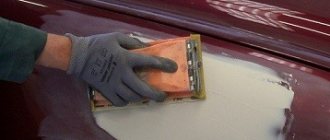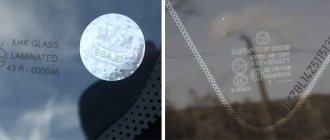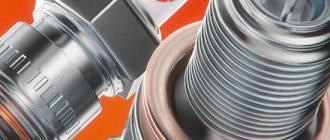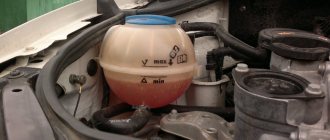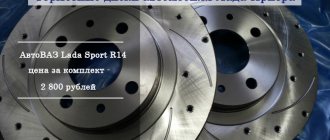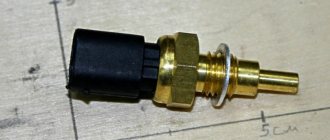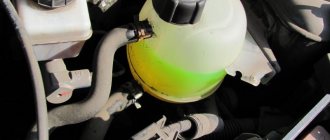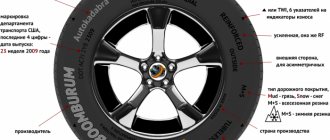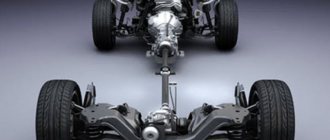Brake fluid is not one of the main topics discussed in car enthusiast communities. According to the car maintenance regulations, it is supposed to be changed once every 2 years (less than once a year). It would seem that what could be important and interesting here? The answer is quite simple - brake fluid should not lead to failure of the brake system, under any circumstances.
And there are quite a lot of prerequisites for failure when using low-quality fluids or those that do not comply with the manufacturer’s recommendations, or violations of regulations and maintenance operations.
At the end of the article, watch a video that explains in simple language the differences and compatibility of brake fluids DOT 3, DOT 4, DOT 5 and DOT 5.1, and also provides recommendations for selection, mixing and topping up.
Also on this page you will find comparative characteristics of various classes of brake fluids and a test table for DOT fluids from 4 different manufacturers.
TEST RESULTS FOR DOT-4 BRAKE FLUID
| Boiling point of “dry” liquid* | Reduced low temperature viscosity** | Present cost per unit of production | Final score | |||
| °C | Intermediate score | With | Intermediate score | Intermediate score | ||
| Lukoil DOT 4 | 252 | 2,0 | 14 | 4,7 | 5 | 3,9 |
| Castrol DOT 4 | 257 | 2,8 | 15 | 4,4 | 2,8 | 3,3 |
| Felix DOT 4 | 245 | 1 | 18 | 3,5 | 4,9 | 3,1 |
| Liqui Moly | 272 | 5 | 16 | 4,1 | 2,2 | 3,8 |
| Luxe DOT-4 | 245 | 1 | 23 | 1,9 | 4,8 | 2,6 |
| Mobil DOT 4 | 268 | 4,4 | 18 | 3,5 | 3,3 | 3,7 |
| Motul DOT 3&4 | 270 | 4,7 | 16 | 4,1 | 2,2 | 3,7 |
| Ravenol DOT 4 | 252 | 2,0 | 13 | 5 | 1 | 2,7 |
| Rosdot DOT 4 | 246 | 1,1 | 21 | 2,5 | 4,7 | 2,8 |
| Zalmer DOT4 | 245 | 1 | 26 | 1 | 4,7 | 2,2 |
* Bigger is better. **Less is better.
Classification and composition of brake fluids
| Brake fluid class | Requirements according to FMVSS standard No. 116 “Brake fluids for automobiles” | ||||
| Boiling point, oC | Kinematic viscosity, mm2/s | Color | |||
| "dry" brake fluid | “moistened” liquid (water 3.5%) | “humidified” at a temperature of 100°C | at a temperature of -40°C | ||
| DOT 3 | 205 no less | 140 no less | 1.5 no more | 1500 no less | from light yellow to light brown |
| DOT 4 | 230 no less | 155 no less | 1.5 no more | 180 no less | |
| DOT 5.1 | 260 no less | 180 no less | 1.5 no more | 900 no less | |
| DOT 5 | 260 no less | 180 no less | 1.5 no more | 900 no less | Dark red |
In international practice, the variety of brake fluids produced is usually classified according to DOT (Russian name DOT) - a system of requirements for their physical and chemical properties. The system was developed by an American institute - the US Department of Transportation (hence the name of the system) - and has received wide international recognition.
Brake fluids are divided into four main classes according to DOT: 2,3,4 and 5.1. In class 5.1, DOT 5.1/ABS is additionally allocated for vehicles equipped with an anti-lock braking system.
In Russia, sometimes there are packages marked DOT 4+ or DOT 4.5, but such marking has nothing to do with the generally accepted classification system.
The chemical composition of the base for liquids of classes 3, 4 and 5.1 is almost the same - these are glycols (dihydric alcohols) and polyesters. The differences are in the addition of additives. Therefore, if it is not possible to replace the entire brake fluid in the system, then, if necessary, it is possible to add one class to another.
Mixing brake fluids is carried out subject to the rule: a fluid of a higher class is added to a fluid of a lower one (but in no case vice versa ).
Liquids of class DOT 5 and DOT 5.1/ABS use silicone with the addition of glycols as a base, so they cannot .
Distinctive features of the main classes of brake fluids:
DOT 3
The composition is determined by simple glycol compounds and therefore by low production costs and, accordingly, by an inexpensive retail price.
- The main disadvantage is high hygroscopicity and, as a result, a rapid decrease in boiling point.
- The service life of such a liquid is no more than 1.5 years.
- Area of use: cars with drum brakes, or front disc, rear drum.
DOT 4
In addition to glycols, the composition includes boric acid. Due to this, the liquid’s resistance to absorption of atmospheric moisture increases and, thus, its service life increases.
- DOT 4 class has the highest viscosity among other classes.
- This class is the most popular among car enthusiasts and is used mainly on cars with disc (front and rear) brakes.
- The average service life of DOT 4 brake fluid is 2 years.
DOT 5.1
The composition is similar to liquids of the DOT 4 class, but due to additives it has the highest boiling point and the lowest viscosity among all classes.
- However, these advantages are the cause of the main disadvantage: high hygroscopicity, and a correspondingly reduced service life (no more than a year).
- The fluid was developed for sports cars, in which functional properties are much more important than durability.
DOT 5
DOT 5 brake fluid has a mixed composition: glycols and silicone.
- Advantages (in addition to low viscosity and high boiling point) are low hygroscopicity and neutrality to brake system materials. In this sense, the liquid has almost ideal characteristics and lasts 4–5 years.
- The only serious drawback is that moisture that is not absorbed by the liquid accumulates in the brake cylinders and at low temperatures seriously complicates their operation.
- In addition, this composition is characterized by increased aeration (air saturation) and for this reason is prohibited for use in cars with ABS.
DOT 5.1/ABS
It is also based on glycols and silicone, but is more hygroscopic than DOT 5. Due to this, the service life is reduced (up to 2 years), but it is possible (taking into account the influence of additives) to get rid of increased saturation of the liquid with air.
Our comment
The modern car owner hardly has any idea what kind of brake fluid is used in his car.
As part of the tests, we deliberately compared DOT 4 brake fluids with each other, as they are the most common in our country. However, when choosing a brake fluid, you must strictly follow the instructions of your car manufacturer before purchasing, for example, DOT 5.1 or DOT 6. The fluid manufacturer will usually indicate which fluids from other manufacturers their product is compatible with. Mixing dissimilar liquids is undesirable, if only because no one has studied the properties of such “cocktails”. And if you don’t know what’s in the tank of your recently purchased car, it’s better to completely replace the brake fluid. All DOT 4 fluids are compatible regardless of the brand on the label. During operation, brake fluid may change color. This will be caused by strong heating, oxidation, wear and corrosion products, as well as interaction with the rubber parts of the car’s braking system. The color change does not affect performance.
We have not seen approval from car manufacturers on the labels of bottles of brake fluid. This is understandable: since the production volumes of brake fluids are much smaller than those of the same motor oils, it is not economically feasible for automakers to conduct expensive tests.
Have a nice trip and safe brakes!
DOT 4 Brake Fluids - "Behind the Wheel" Choice
Specifications
The main characteristics of the diesel fuel according to the DOT system are:
Boiling point
For dot 4 this figure is 230ºC for “dry” liquid and 155ºC for “wet”.
The fact is that brake cleaner has the unpleasant property of accumulating atmospheric moisture. The higher the percentage of moisture, the lower the boiling point. With a moisture content of only 3.5%, the boiling point changes by one and a half times.
The critical boiling point is considered to be 175 degrees; at such indicators, the liquid should be replaced. In quiet driving mode, brake discs and calipers rarely heat up to 200ºC, but in aggressive city traffic conditions such figures are quite achievable.
Viscosity
This parameter also has 2 indicators: at the upper – at 100ºC and at the lower – at – 40ºC boundaries, and is, respectively, no more than 1.5 cSt and no less than 1800 cSt.
Brake fluid that is too thick is quite capable of paralyzing the entire system; too liquid will definitely find somewhere to leak out.
These two qualities of dot 4 can be considered the main ones, but there are also secondary ones:
Stability
This means that TJ should not change its chemical and physical characteristics during the period of use. The main reasons leading to such changes are constant temperature changes, moisture accumulation, and service life.
Important! The trouble-free operation of DOT 4 brake fluid is 2 years, regardless of the intensity of use.
Even if the car has been idle all this time, the brake fluid still changes its properties over the specified period, and its use is unacceptable.
Neutrality
TJ should not be aggressive towards non-metallic parts of the system.
Protection
Brake cylinders and pistons are subject to gradual destruction and corrosion. The additives contained in dot 4 protect these surfaces from scuffing and corrosion.
Replacement
Replacing brake fluid in modern cars is a process that is best left to service specialists.
In old cars, garage craftsmen changed the brake fluid themselves; fortunately, the process was not particularly complicated, requiring a minimum of tools and one partner. Particularly advanced ones could carry out the entire operation alone. It was necessary to pump out the old fluid from the reservoir, remove the hoses from the brake cylinder fittings, drain the fluid, and fill the hoses with new fluid. After this, pump DOT 4 through the system, getting rid of excess air, tighten the fittings and add liquid to the tank. Everything looks simple, but you need to know that in modern cars, brake fluid, in addition to its main purpose, also affects the operation of the ABS, as well as the car’s stabilization systems.
Problems in any of the systems will not lead to anything good. Considering the low cost of changing fluid at a service center, it makes sense to go there. And it will take a little time, so it’s better to do without amateur activities.
Dot 5.1 advantages and differences from SL 6 Dot 4
Dot 5.1 Closely competing liquid with the newest SL6. The main role here is played by the unit after 5. There is the usual Dot 5 standard, which is not widely available.
Dot 5 is a silicone lubricant used in sports equipment, as well as on motorcycles. It can also sometimes be found in some military equipment. After some time, representatives thought that they needed to replace this rather unsuccessful drug with a more common one.
Therefore, as a continuation of Dot 4 SL 6, Dot 5.1 appeared. Low temperature viscosity was reduced, but not to the same extent as the modern SL6, but it was still reduced.
The second point: the high-temperature properties were enhanced. Dot 5.1 has the highest wet boiling point. Therefore, it has its own niche of application.
How to spot a fake
The presence of a surrogate on the market is a problem for car enthusiasts. Knowing a few things will help you buy BOSCH DOT 4 brake fluid and not make a mistake:
- Quality of packaging. The manufacturer devotes a lot of effort and time to creating containers. The presence of unevenness, traces of plastic soldering, and changes in shades are unacceptable.
- Label. The original label is tightly affixed and has no grammatical errors, blots or typos. Text blurring is also not allowed.
- Salesman. It is recommended to purchase liquid only from an authorized dealer. Addresses and contact details can be found on the manufacturer’s website.
- Price. A genuine product cannot cost significantly less than the average market price.
Classification
The brake fluid standard for most countries in the world is the same - DOT. It was developed by the US Department of Transportation. This standard indicates that the brake fluid complies with FMVSS No. 116, which allows use in the brake systems of passenger cars and commercial vehicles, adjusted for their technical characteristics.
In addition to the American standard, brake fluids are marked in accordance with ISO, SAE, etc. standards adopted in Europe and Asia.
But all these standards classify TF according to two main parameters: kinematic viscosity and boiling point. The first shows the operating temperature range, and the second is responsible for preventing the occurrence of the so-called “vapor lock”, which occurs at high temperatures, which can lead to the brake pedal not working at the right time.
Based on the boiling point, there are two states of brake fluid: dry, that is, without water, and moistened, containing up to 3.5% water. The first is determined only on fresh liquid, which still has high performance properties. The moistened boiling point refers to a fuel oil that has already been in use for about 2-3 years.
Product Description
The German company Bosch is a manufacturer of various products of the highest quality. The world-famous name of the corporation has long been associated among users with reliability and quality. But many consumers don’t even realize that the organization is engaged not only in the production of household appliances. The manufacturer's assortment includes automotive fluids of the highest standard, which show a high level and are not inferior to other brands.
Bosch DOT-4 brake fluid is a high-quality synthetic product designed for modern, powerful cars. Unique developments, complemented by a pedantic approach and quality control at all stages of production. We made it possible to create a truly high-quality product that meets all international requirements and standards applicable to brake fluids.
Selecting brake fluid
So, we have reviewed with you the features of the popular and, one might say, the best TJs on the market. Now let's summarize:
- If your wallet is not bursting with too much money, then Sintek DOT-4 liquid is best suited. It is very cheap, but at the same time it perfectly maintains its declared performance.
- Better than the previous option would be RosDOT-4. This specimen perfectly maintains its performance even at significant sub-zero temperatures. However, it is not recommended for use in cars with ABS.
- An excellent but expensive option would be Castrol. It performs well in all directions and can be used in the most aggressive conditions.
- An interesting option for those who live in the center and south would be Liqui Moli. Among the imported ones, it performs well and has an affordable price.
Rating and price of Dot 4 brake fluids
In conclusion, we present the names of the brands that top the rating of DOT 4 brake fluids in Russia. The expert assessment was carried out by specialists from the Za Rulem website. The average cost of one package and its volume are indicated in brackets.
| Name | Manufacturing company | Volume | Price | Manufacturer country |
| Brake fluid Castrol Dot 4 – Castrol | "VR Europe" | 500ml | 330rub | Germany |
| Hi-Gear HG7044 | Hi-Gear Product | 473ml | 220r | USA |
| Pentosin Super | Deutsche Pentosin-Werke | 1000ml | 325r | Germany |
| Shell Donax YB Brake Fluid DOT 4 | Shell | 500ml | 300rub | Germany |
| Brake fluid Dot 4 Bosch – Bosch DOT4 | Bosch | 500ml | 110r | Germany |
| Mobile | ExxonMobil Lubricant & Specialties | 500ml | 265rub | EU |
| LUXE Green Line | Dolphin Industry | 455g | 145r | Russia |
| SINTEC Euro | "Obninskorgsintez" | 455g | 110r | Russia |
| TCL | Tanikawa | 1000ml | 440rub | Japan |
| TUTELA TOP 4 | Petronas Lubricant | 500ml | 260rub | Italy |
| TOTAL HBF 4 | Total Lubrifiant | 500ml | 215r | France |
Compatibility with other fluids
Conversations about the compatibility, interchangeability or incompatibility of brake fluids are a fairly common topic of discussion among motorists. As a rule, mechanics advise using products from well-known companies, for example Bosch, Castrol, Shell, and always with the same markings. Of course they are right. Several brands of brake fluids, tested by employees of the Za Rulem portal, confirm the huge variation in the quality of brake fluids presented on the Russian market. But for emergency cases, when mixing two types or replacing liquid is inevitable, we suggest using the information below.
DOT 4 is compatible with the following brake fluids - DOT3, DOT4.5, DOT5.1, and is not compatible with silicone fluids - DOT5, DOT5.1 (ABS).
